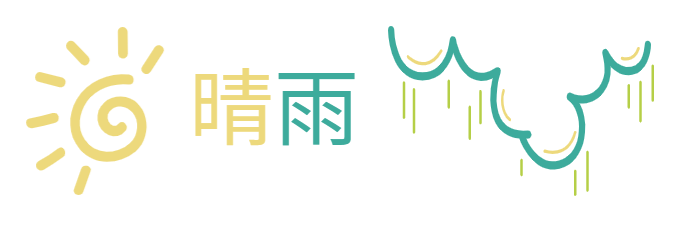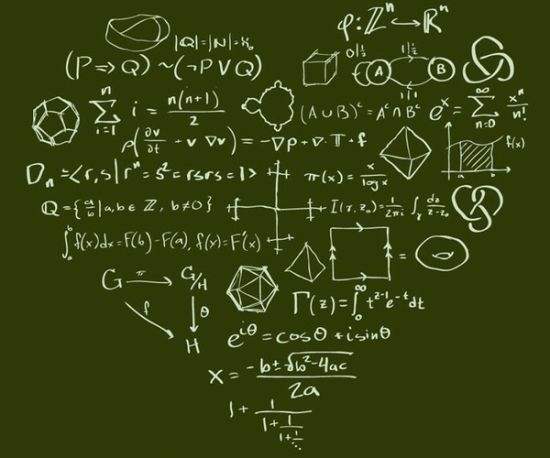通知
此博客运行在jpress系统上,如果你喜欢此博客模板,请加QQ群:1061691290(whimurmur模板/jpress插件),免费下载使用
leetcode数据库 系列题 销售分析
作者:whisper
链接:http://proprogrammar.com:443/article/701
声明:请尊重原作者的劳动,如需转载请注明出处
1082. 销售分析 I
产品表:
Product+--------------+---------+ | Column Name | Type | +--------------+---------+ | product_id | int | | product_name | varchar | | unit_price | int | +--------------+---------+ product_id 是这个表的主键.销售表:
Sales+-------------+---------+ | Column Name | Type | +-------------+---------+ | seller_id | int | | product_id | int | | buyer_id | int | | sale_date | date | | quantity | int | | price | int | +------ ------+---------+ 这个表没有主键,它可以有重复的行. product_id 是 Product 表的外键.编写一个 SQL 查询,查询总销售额最高的销售者,如果有并列的,就都展示出来。
查询结果格式如下所示:
Product 表: +------------+--------------+------------+ | product_id | product_name | unit_price | +------------+--------------+------------+ | 1 | S8 | 1000 | | 2 | G4 | 800 | | 3 | iPhone | 1400 | +------------+--------------+------------+ Sales 表: +-----------+------------+----------+------------+----------+-------+ | seller_id | product_id | buyer_id | sale_date | quantity | price | +-----------+------------+----------+------------+----------+-------+ | 1 | 1 | 1 | 2019-01-21 | 2 | 2000 | | 1 | 2 | 2 | 2019-02-17 | 1 | 800 | | 2 | 2 | 3 | 2019-06-02 | 1 | 800 | | 3 | 3 | 4 | 2019-05-13 | 2 | 2800 | +-----------+------------+----------+------------+----------+-------+ Result 表: +-------------+ | seller_id | +-------------+ | 1 | | 3 | +-------------+ Id 为 1 和 3 的销售者,销售总金额都为最高的 2800。
select seller_id
from Sales
group by seller_id
having sum(price) >= all(
select sum(price) saleIncome
from Sales
group by seller_id
)按人分组,销售金额总和比其它人的销售总金额都大的即最高的,学一下在having中使用聚集函数与子查询的用法,学一下求最值的方法(>=all)
再看另一种求最值的方法
SELECT
seller_id
FROM
Sales
GROUP BY
seller_id
HAVING
SUM(price) = (
SELECT
SUM(price) AS seller_price
FROM
Sales
GROUP BY
seller_id
ORDER BY
seller_price DESC
LIMIT 1 OFFSET 0
);这里用 group by...order by desc...limit 1求最值
1083. 销售分析 II
Table:
Product+--------------+---------+ | Column Name | Type | +--------------+---------+ | product_id | int | | product_name | varchar | | unit_price | int | +--------------+---------+ product_id 是这张表的主键Table:
Sales+-------------+---------+ | Column Name | Type | +-------------+---------+ | seller_id | int | | product_id | int | | buyer_id | int | | sale_date | date | | quantity | int | | price | int | +------ ------+---------+ 这个表没有主键,它可以有重复的行. product_id 是 Product 表的外键.编写一个 SQL 查询,查询购买了 S8 手机却没有购买 iPhone 的买家。注意这里 S8 和 iPhone 是 Product 表中的产品。
查询结果格式如下图表示:
Product table: +------------+--------------+------------+ | product_id | product_name | unit_price | +------------+--------------+------------+ | 1 | S8 | 1000 | | 2 | G4 | 800 | | 3 | iPhone | 1400 | +------------+--------------+------------+ Sales table: +-----------+------------+----------+------------+----------+-------+ | seller_id | product_id | buyer_id | sale_date | quantity | price | +-----------+------------+----------+------------+----------+-------+ | 1 | 1 | 1 | 2019-01-21 | 2 | 2000 | | 1 | 2 | 2 | 2019-02-17 | 1 | 800 | | 2 | 1 | 3 | 2019-06-02 | 1 | 800 | | 3 | 3 | 3 | 2019-05-13 | 2 | 2800 | +-----------+------------+----------+------------+----------+-------+ Result table: +-------------+ | buyer_id | +-------------+ | 1 | +-------------+ id 为 1 的买家购买了一部 S8,但是却没有购买 iPhone,而 id 为 3 的买家却同时购买了这 2 部手机。
select distinct s.buyer_id
from Sales s inner join Product p
on s.product_id = p.product_id and p.product_name = 'S8' and buyer_id not in(
select distinct s2.buyer_id
from Sales s2 inner join Product p2
on s2.product_id = p2.product_id and p2.product_name = 'iPhone'
)思路清晰,买了S8的买家,且不属于买了iPhone的买家,学一下not in否定的用法
1084. 销售分析III
Table:
Product+--------------+---------+ | Column Name | Type | +--------------+---------+ | product_id | int | | product_name | varchar | | unit_price | int | +--------------+---------+ product_id 是这个表的主键Table:
Sales+-------------+---------+ | Column Name | Type | +-------------+---------+ | seller_id | int | | product_id | int | | buyer_id | int | | sale_date | date | | quantity | int | | price | int | +------ ------+---------+ 这个表没有主键,它可以有重复的行. product_id 是 Product 表的外键.编写一个SQL查询,报告2019年春季才售出的产品。即仅在2019-01-01至2019-03-31(含)之间出售的商品。
查询结果格式如下所示:
Product table: +------------+--------------+------------+ | product_id | product_name | unit_price | +------------+--------------+------------+ | 1 | S8 | 1000 | | 2 | G4 | 800 | | 3 | iPhone | 1400 | +------------+--------------+------------+ Sales table: +-----------+------------+----------+------------+----------+-------+ | seller_id | product_id | buyer_id | sale_date | quantity | price | +-----------+------------+----------+------------+----------+-------+ | 1 | 1 | 1 | 2019-01-21 | 2 | 2000 | | 1 | 2 | 2 | 2019-02-17 | 1 | 800 | | 2 | 2 | 3 | 2019-06-02 | 1 | 800 | | 3 | 3 | 4 | 2019-05-13 | 2 | 2800 | +-----------+------------+----------+------------+----------+-------+ Result table: +-------------+--------------+ | product_id | product_name | +-------------+--------------+ | 1 | S8 | +-------------+--------------+ id为1的产品仅在2019年春季销售,其他两个产品在之后销售。
select p.product_id, p.product_name
from Product p
where exists(
select 1
from Sales
where product_id = p.product_id and date_format(sale_date, '%Y-%m-%d') >= '2019-01-01' and date_format(sale_date, '%Y-%m-%d') <= '2019-03-31'
) and not exists(
select 1
from Sales
where product_id = p.product_id and (date_format(sale_date, '%Y-%m-%d') < '2019-01-01' or date_format(sale_date, '%Y-%m-%d') > '2019-03-31')
)思路清晰,存在指定时间段出售的情况,不存在指定时间段外出售的情况,学一下exist和not exists的用法
再看另一种解法
select product_id, product_name
from product
where product_id not in (
select product_id
from sales
where sale_date < '2019-01-01' or sale_date>'2019-03-31'
);这里用not in否定指定时间段外的情况,那么剩下的全是指定时间段内的情况,上面exists是没必要的,因为默认情况是在表中一定是在某时间卖出了的,否定一下反面情况(双重否定等于肯定!!=true)
亲爱的读者:有时间可以点赞评论一下
我慒慒懂懂过了一年,这一年似乎没有改变,守着一个人的世界,空空如也
作者其它文章
注册登陆
搜索
文章标签
- 数字图像处理
- 剑指offer2
- 工作学习
- 这些算法有自己的方法
- 插件
- 软件使用
- 数学
- mybatis
- 计算机网络
- 正则表达式专栏
- 问题记录
- Thymeleaf
- zuul
- hystrix
- 正则表达式
- feign
- 编程相关技术
- ribbon
- 微服务
- eureka
- 分布式
- 模板
- angularjs
- javascript
- html
- c++ grammar
- c grammar
- python grammar
- java grammar
- 软件工程
- 数据库系统概论
- 转载
- 小知识
- 考研
- webservice
- 网络
- struts2
- springmvc
- springboot
- redis
- mongodb
- hibernate
- 计算机组成原理
- 当代世界经济与政治
- leetcode
- 思想道德修养与法律基础
- 毛泽东思想和中国特色社会主义理论体系概论
- 作乐
- 生活点滴
- 娱乐
- 中国近现代史纲要
- 操作系统
- sunny day, singing day
- 设计模式与算法
- 框架
- 概率论与数理统计
- 线性代数
- JAVA
- 前端
- 数据库
- 马克思主义基本原理概论
- 软考
- 生活,生,活
- 晴雨
- CSS
- LINUX
- java web整合开发王者归来
- 英语
- 高等数学
- 数据结构
原创文章时间线
网站信息

网站名称:晴雨
网站运行天数:1791天
网站系统:JPress(一个使用Java开发,类似WordPress的产品。天生融合微信生态系统,简单易上手。)
文章分类总数: 114
文章总数: 828
产品总数: 0
标签总数: 70
评论总数: 1164
文章最后更新时间:
2022年12月12日 06时
网站页面:
whimurmur模板 (designed by whisper)
联系我:
QQ:2222071789, QQ群:1061691290(备注来自晴雨)
关于网站名:
晴雨:天晴下雨,总见蓝天


















全部评论